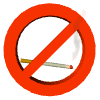Michael Fumento
Factual · Powerful · Original · Iconoclastic
EPA's Pseudoscience Goes Up in Smoke
January 01, 1998 · Michael Fumento · EpaIt was the farce that launched a thousand bans.
In 1993, the EPA released a study ranking passive smoking at the top of its carcinogen pecking order. It did so based on a combined analysis (meta-analysis) of 11 American studies. The media quickly fell into line, with headlines blaring: "Passive Smoking Kills Thousands," and editorials demanding: "Ban Hazardous Smoking; Report Shows It’s a Killer."
Suddenly, smokers found themselves ranked below child-molesting lepers. The crusade against smoking in public places assumed ludicrous dimensions, culminating with President Clinton trying to ban it not just IN federal buildings but anywhere NEAR them.

Yet since the EPA’s hour of glory, it’s been battling not just (predictably enough) the tobacco companies, but also the Congressional Research Service (CRS), and myriad scientists and science journalists. It ignored them all, but has now run into an unmoveable object in the form of a federal judge, who ruled that the agency’s report ignored accepted scientific and statistical practices in making its risk assessment.
This has no direct effect on legislation, but may prompt repeals of some legislation and hold off the implementation of new anti-smoking laws.
Although the EPA’s report had more holes than a piece of Swiss cheese under assault by a ravenous mouse, its greatest weakness was its refusal to use the gold standard in epidemiology, the 95 percent confidence interval. This simply means there’s only five chances in 100 that the conclusion came about simply by chance, even if the study itself was done correctly.
Curiously, the EPA decided to use a 90 percent level, effectively doubling the likelihood of getting its result by sheer luck of the draw.
Why would it do such a strange thing? Yup. Because its results weren’t significant at the 95 percent level. Essentially, it moved the goal post to the three yard line because the football had fallen two yards short of a touchdown. There’s a technical scientific term for this kind of action — dishonesty.
The EPA report was scientifically at or below the level of anything ever put out by the Tobacco Institute. It was also a harbinger of EPA games to come. For example, when it comes to radon, the agency has simply ignored the overwhelming number of household epidemiological studies showing no harm from the gas at low levels, instead choosing to extrapolate down from men exposed to massive amounts of radon each day for years in uranium mines.
In promulgating new air pollution regulations last year, again the EPA ignored the majority of epidemiological studies showing no connection between harm and the pollutants in question, instead relying on a few studies conducted by "advocacy scientists" (one a former EPA employee).
As to passive smoking, two more meta-analyses have appeared since the EPA’s. One was conducted on behalf of the World Health Organization (WHO) in seven countries over seven years. When it appeared, the tobacco industry claimed it supported their position, and WHO squealed like a pig going to slaughter. "Passive Smoking Does Cause Lung Cancer, Do Not Let them Fool You," blared its press release.
No, it was WHO trying to fool you. Its study also found no statistical significance at a 95 percent level. So the press release just ignored the whole issue of significance altogether.
The third meta-analysis, published in the British Medical Journal (BMJ), found slight statistical significance when 48 studies were combined. Looked at separately, though, only seven showed significant excesses of lung cancer meaning 41 did not.
Further, the combined increased risk was merely 24 percent, also called a "relative risk" of 1.24.
Such tiny relative risks are generally considered meaningless, given the myriad pitfalls in epidemiological studies. "As a general rule of thumb," says the editor of the prestigious New England Journal of Medicine Marcia Angell, "We are looking for a relative risk of three or more" before accepting a paper for publication.
"My basic rule is if the relative risk isn’t at least three or four, forget it," says Robert Temple, director of drug evaluation at the Food and Drug Administration.
Explains the National Cancer Institute, "relative risks of less than two are considered small and are usually difficult to interpret. Such increases may be due to chance, statistical bias, or effect of confounding factors that are sometimes not evident."
The main exception to that rule comes when the study is extremely large, but such was not the case with the BMJ analysis. The studies showing excess disease comprised a mere 1,388 persons. By contrast, a recent study implicating obesity as a cause of early death contained over 320,000 subjects.
So where does this leave us? Do we know that passive smoking doesn’t cause lung cancer? No. But we know that either it does not or that if it does the risk is so tiny as to be unmeasurable. Does this mean passive smoke poses no health risks? No. It makes sense that it would aggravate asthma and other breathing problems, if nothing else.
Does it mean that just because smokers aren’t murdering other people, they’re not still engaging in a nasty, expensive habit that greatly increases their own chance of sickness and premature death? Definitely not.
Ultimately, the EPA study tells us a lot less about passive smoking than it does about the basic dishonesty of the agency in charge of protecting our environmental health.
